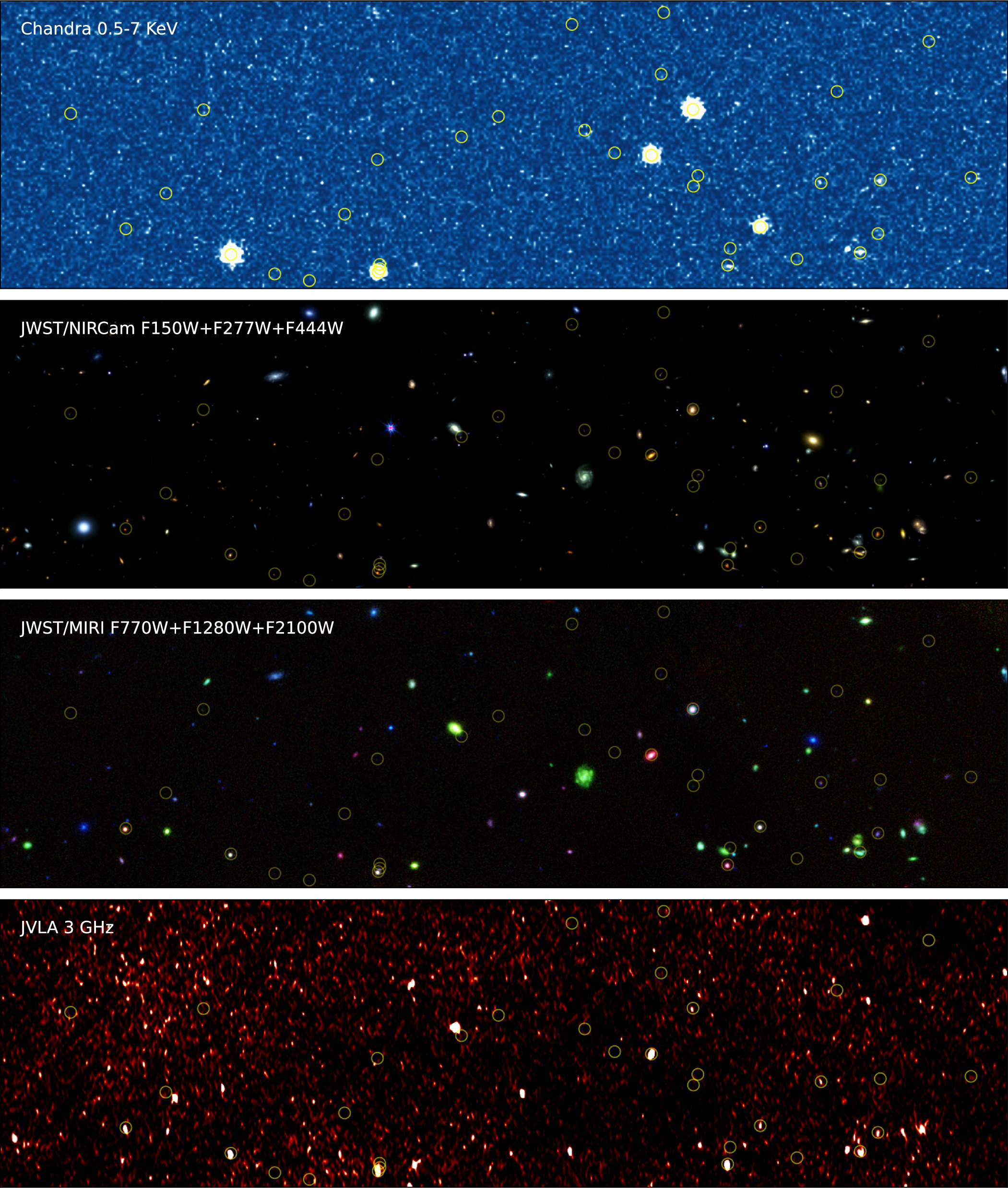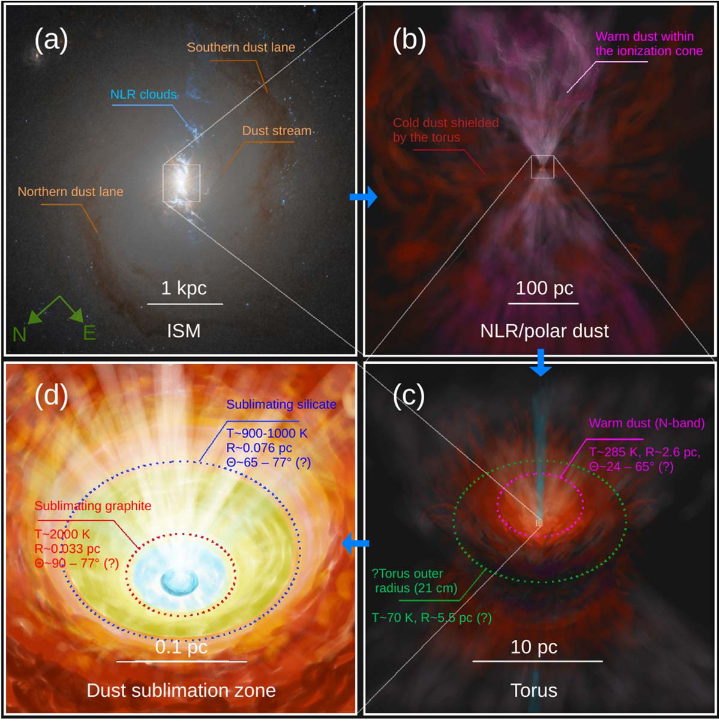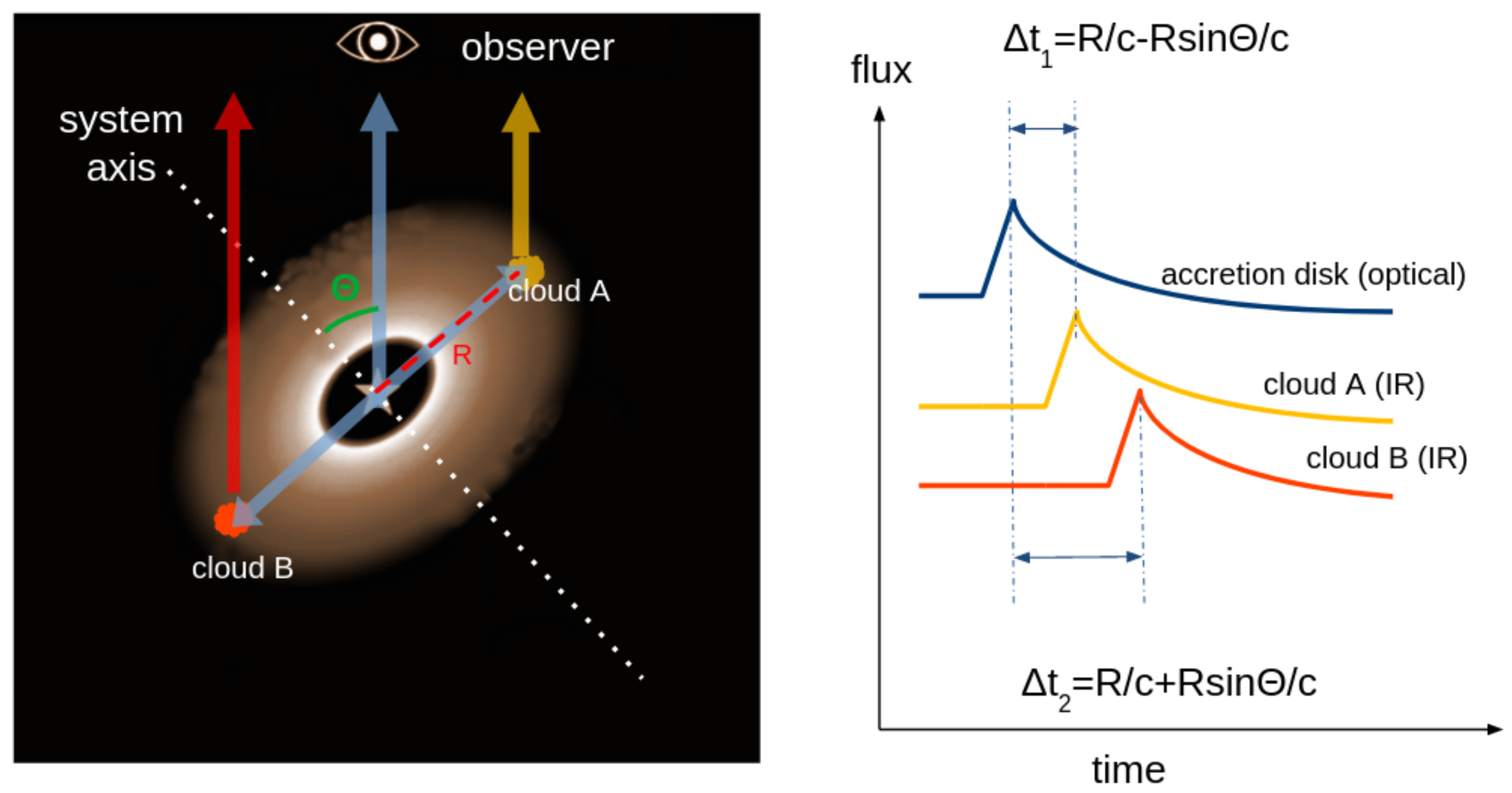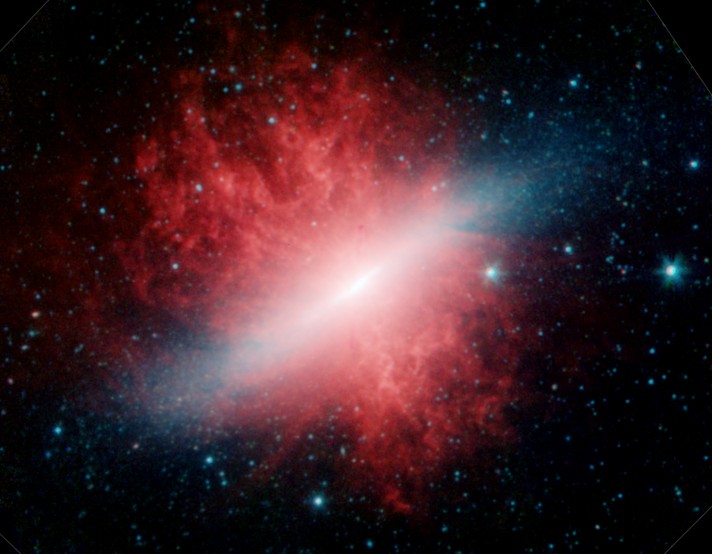Research
AGN demographics across cosmic time
Supermassive black holes (SMBHs) are found at the centers of most galaxies and are believed to shape the galaxy evolution during the active galactic nuclei (AGN) phase. However, as pointed out by the ASTRO2020 Decadal Survey: “the cosmic census of AGNs is currently patch, which limits our understanding of the co-evolution of galaxies and their SMBHs.”
With the successfully launch and operation of JWST, we have entered a new era. I have led a comprehensive search of the AGN population across the cosmic time in the GOODS/HUDF regions with a combination of SMILES/MIRI and JADES/NIRCam data (see paper). We have demonstrated the new discovery space enabled by JWST/MIRI and report huge progresses in the search of obscured AGNs in normal galaxies, dwarf galaxies and high-z Universe. Before that, I have also conducted AGN identifications with the deepest X-ray, mid-IR and radio data in the pre-JWST era (see paper), showing that no single band or technique is close to reach a complete AGN sample.
Looking ahead, as a co-PI of the COSMOS-3D program, we will carry out a 500 arcmin^2 MIRI survey with NIRCam image and wide-field-slitless spectroscopy observations in the COSMOS field. Stay tuned for the exciting results from this large JWST legacy program!
quasars and AGN in the early Universe
As the brightest AGNs, quasars can be seen in the very distant Universe. What are the properties of the first generations of quasars and their host galaxies? How to understand their connections with other galaxy populations later on? In the pre-JWST era, I have studied the IR spectral energy distributions (SED) of quasars at z>5 and inferred the typical host galaxy stellar masses of these quasars through a novel method (see paper). I have also contributed to the study of some brightest obscured AGN with Spitzer and ALMA observations in the re-ionization era (see paper). With new data obtained with JWST, we begin to directly study the rest-frame optical properties of high-z quasar and their host galaxies with NIRCam and NIRSpec observations (e.g., paper 1, paper 2).
AGN obscuration structures and IR properties
The AGN phenomenon is commonly associated with large amount of gaseous and dusty material surrounding it. This component, also known as dusty torus, bridges the black hole accretion and the host galaxy interstellar medium, offering critical insights in the BH-galaxy interaction. Due to the limited spatial resolutions of IR observations, besides a few very nearby objects, we cannot directly spatially reveal this structure and thus our knowledge is very limited.
During my PhD and post-doc years, I have conducted a comprehensive study of AGN IR SEDs from z~0 to z~6 and developed a semi-empirical framework to understand the AGN IR emission. This includes the characterization of AGN intrinsic IR SED variations (see paper), constrain the SED shape of the AGN-heated dust far-IR emission (see paper), and reveal the role of polar dust, or narrow-line-region dust (see paper, paper). In addition, we have also probed the structures of AGN dust torus through near- to mid-IR dust reverberation mapping techniques and studied their connection with the AGN IR SEDs (see paper, paper).
In 2022, we wrote a comprehensive review on this topic and illustrated how the various IR observations of different AGN populations across the cosmic time can be reconciled together (see paper).
IR time-domain astronomy
I have pioneered to use the NEOWISE mid-IR time domain data and ground-based optical transient surveys to conduct statistical dust-reverberation mappings of quasars (see paper). We have also carried out a detailed multi-band near- to mid-IR reverberation analysis of the famous type-1 AGN NGC 4151 with archival data collected over 30 years and observationally constrained the AGN torus structures from the very inner part to the outer edges for the first time (see paper).
Besides the study of AGN, I have also involved in the mid-IR time-domain study of tidal disruption events (TDE, see e.g., paper, paper).





